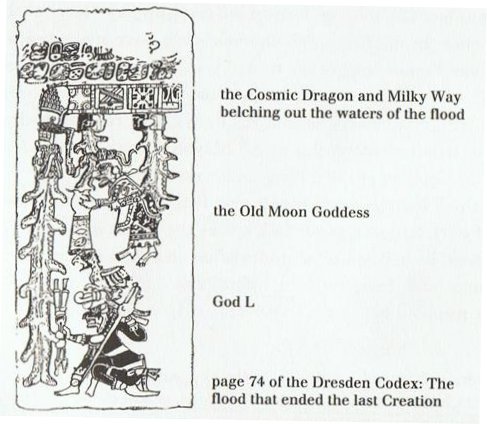141. At the time of rongorongo the end of the Lion
figure was at the end of glyph line Ca13. Towards the end
of the last ice age the end of the Lion (Deneb
Ola) had been at
the northern spring equinox. And Leo was succeeded by
Virgo who personified summer - the opposite to
the icy winter:

 |
 |
 |
 |
 |
|
Ca13-16 |
Ca13-17 |
Ca13-18 (361) |
Ca13-19 |
Ca13-20 (→ 260) |
|
oho te vae |
tagata puoko
erua |
tagata puo
pouo |
vero hia |
- |
|
INVISIBLY CLOSE
TO THE SUN
(helical dates): |
|
Sept 13 (256) |
14 (*177 = *360
- 183) |
DENEB-OLA |
16 |
17 (*180) |
|
ºSept 9 (252 =
69 + 183) |
10 (*173) |
11 |
12 (255) |
13 |
|
'Aug 17 (229) |
18 (*150) |
19 |
20 |
21 |
|
"Aug 3 (215) |
4 (*136) |
5 |
6 |
7 |
|
JULY 11 (192) |
12 |
13 |
14 |
15 (196 = 88 +
108) |
|
The later Polynesian
ear may have
heard -ola in
Denebola as
ola (life),
i.e. how this was
the place where
the Lion of
Summer (ho-ra)
ended, where he
had his tail,
deneb.
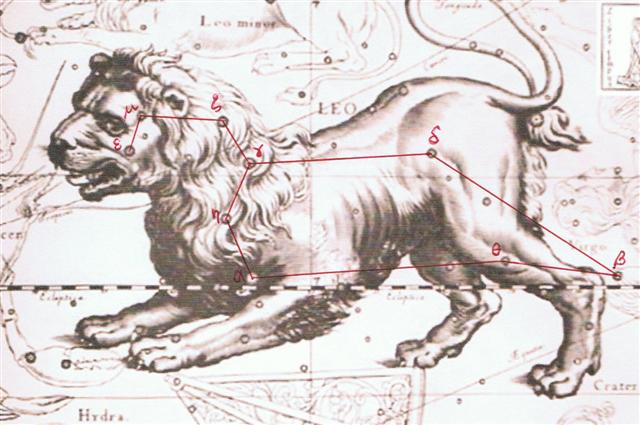
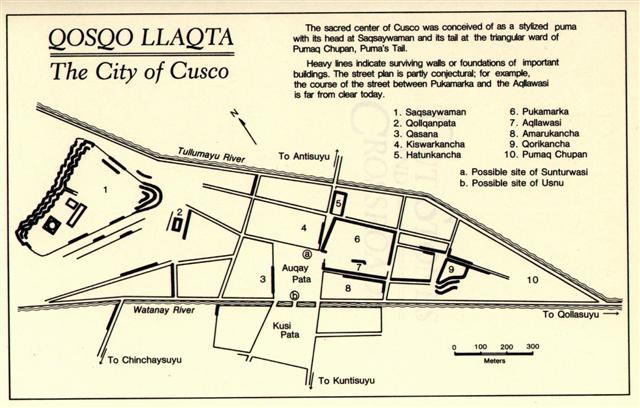
... tenebræ,
Holy Week
devotion (matins
and lauds) at
which candles
lighted at the
beginning are
successively put
out. XVII. L.
(pl.), parallel
to Skr. támah,
g. támasah,
Lith. tamsà,
Lett. timsa
darkness, and
referred to
*tem∂srā and
cogn. with Skr.,
Baltic. and
Celtic forms.
(English
Etymology)
...
Like archaic
China and
certain
Amero-Indian
societies,
Europe, until
quite recently,
celebrated a
rite involving
the
extinguishing
and renewal of
domestic fires,
preceded by
fasting and the
use of the
instruments of
darkness. This
series of events
took place just
before Easter,
so that the
'darkness' which
prevailed in the
church during
the service of
the same name (Tenebrae),
could symbolize
both the
extinguishing of
domestic fires
and the darkness
which covered
the earth at the
moment of
Christ's death.
In all
Catholic
countries it was
customary to
extinguish the
lights in the
churches on
Easter Eve and
then make a new
fire sometimes
with flint or
with the help of
a burning-glass.
Frazer brings
together
numerous
instances which
show that this
fire was used to
give every house
new fire ...
... And so they
waited there in
the darkness at
the place where
the sun rises.
At length the
day dawned, a
chilly grey at
first, then
flaming red. And
the sun came up
from his pit,
suspecting
nothing. His
fire spread over
the mountains,
and the sea was
all glittering.
He was there,
the great sun
himself, to be
seen by the
brothers more
closely than any
man had ever
seen him. He
rose out of the
pit until his
head was through
the noose, and
then his
shoulders. Then
Maui
shouted, and the
ropes were
pulled, the
noose ran taut.
The huge and
flaming creature
struggled and
threshed, and
leapt this way
and that, and
the noose jerked
up and down and
back and forth;
but the more the
captive
struggled, the
more tightly it
held. Then out
rushed Maui
with his
enchanted
weapon, and beat
the sun about
the head, and
beat his face
most cruelly.
The sun screamed
out, and groaned
and shrieked,
and Maui
struck him
savage blows,
until the sun
was begging him
for mercy. The
brothers held
the ropes tight,
as they had been
told, and held
on for a long
time yet. Then
at last when
Maui gave
the signal they
let him go, and
the ropes came
loose, and the
sun crept slowly
and feebly on
his course that
day, and has
done ever since.
Hence the days
are longer than
they formerly
were. It was
during this
struggle with
the sun that his
second name was
learned by man.
At the height of
his agony the
sun cried out:
'Why am I
treated by you
in this way? Do
you know what it
is you are
doing. O you
men? Why do you
wish to kill
Tama nui te ra?'
This was his
name, meaning
Great Son of the
Day, which was
never known
before ... |
|
CLOSE TO THE
FULL MOON (and
nakshatra
dates): |
|
March 14 (→ π) |
15 (*360) |
16 |
DZANEB |
18 (77 = 260 -
183) |
|
ºMarch 10 (69) |
11 (*356) |
12 (*354 + *3) |
13 (72) |
3-14 |
|
'Febr 15 (46 =
73 - 27) |
16 (*333) |
17 |
18 |
19 (50) |
|
"Febr 1 (32 = 73
- 41) |
2 (*319) |
3 |
4 |
5 (36) |
|
9 (375 = 73 - 64
+ 366) |
JAN 10 (*296) |
11 |
12 |
13 |
|
When around
10500 BC the Leo
constellation
had risen with
the Sun at the
northern spring
equinox (0h)
Orion would have
been there a
quarter of a
year earlier in
midwinter. Right
ascension
increases
towards the
east. From
Betelgeuze (*88)
to Regulus
(*152) there
were *64 right
ascension days.
The Sphinx
pointed at Leo
and the 3 great
pyramids towards
the triplet of
stars in Orion's
Belt (Tau-toru)
which came
earlier in the
year:
.jpg)
At that ancient
time Leo had
corresponded to
the Father of
Light (Jus
Piter, Jupiter)
and the
following Virgo
had corresponded to the fertile
Mother Earth of
summer. Friday
(the day of
Venus) followed
the
day of Jupiter
(Thursday).
And the Nile was
reflected in the
Milky Way River.
On the west bank
was the burial
place
corresponding to
autumn equinox.
But in Egypt
everything was
upside down and the
sweet water
originated from
the mountains
high up in the
south and
therefore the
ancient Lion in
the sky had to
be a female, a
Sphinx.
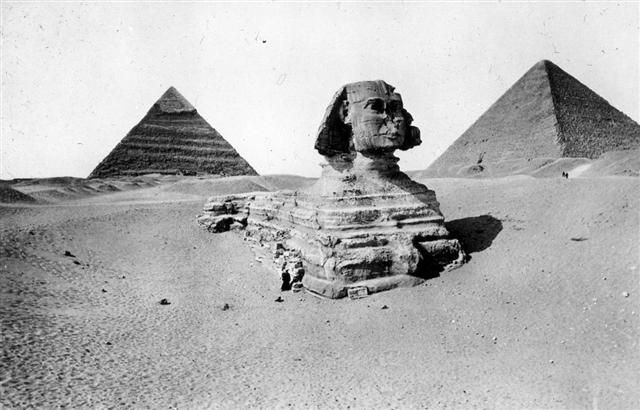
...
Atea then
became the wife
of
Rua-tupua-nui,
Source of Great
Growth, and they
became the
parents of all
the celestial
beings, first
the shooting
stars, then the
Moon and the
Sun, next the
comets, then the
multitude of
stars and
constellations,
and finally the
bright and dark
nebulae. When
this tremendous
task had been
accomplished
Atea took a
third husband,
Fa'a-hotu,
Make Fruitful.
Then occurred a
curious event.
Whether Atea
had wearied of
bringing forth
offspring we are
not told, but
certain it is
that Atea
and her husband
Fa'a-hotu
exchanged sexes.
Then the eyes of
Atea
glanced down at
those of his
wife Hotu
and they begat
Ru. It
was this Ru
who explored the
whole earth and
divided it into
north, south,
east, and west
... |
|
The 3 'stones' (Tau-toru)
inside the House
of Orion the
Giant (Bet-el-geuze)
can now be
understood as
corresponding to
those 3 days
when the Sun was in
his garment of
Támah,
Tama nui te
ra,
Timsa,
etc., and forced
to move slowly
at the winter solstice.
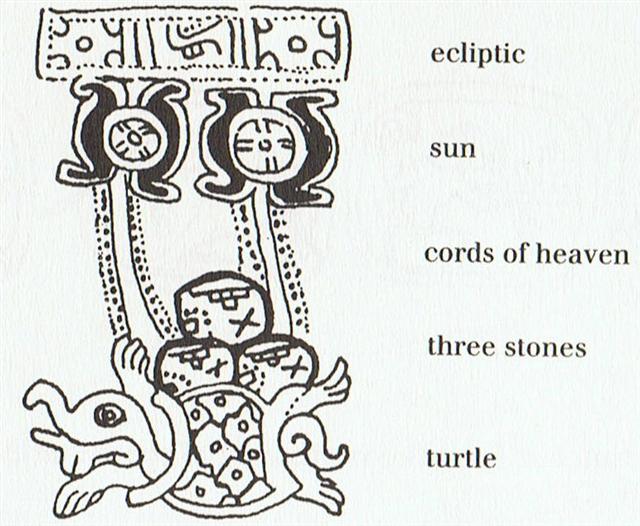
... In the
Polynesian this
[tama na,
father in the
Efaté language]
is distinguished
from táma
child by the
accent tamā
or by the
addition of a
final syllable
which
automatically
secures the same
incidence of the
accent,
tamái,
tamana
...
... In Jewish
mythology it was
the word emet
that was carved
into the head of
the Golem
which ultimately
gave it life.
But when the
letter 'aleph'
was erased from
the Golem's
forehead, what
was left was 'met'
- dead. And so
the Golem
died ...
 |
 |
 |
|
Ga1-19 |
Ga1-20 |
Ga1-21 →
121 = 11
* 11 |
|
KHAFRE
ALNILAM
= ε
Orionis |
MENKAURE
ALNITAK
= ζ
Orionis |
*85 |
|
June 12 |
13 |
14 |
|
'May 16
(136) |
17 |
18 |
|
"May 2 |
3 (123) |
4 |
|
APRIL 9
(*19) |
10 |
11 (101
= 165 -
64) |
|
79 = 19
+ 60 |
80 = 84
- 4 |
81 = 101
- 20 |
121 (Ga1-21) =
11 * 11 and 3 *
121 = 363. |
South of the equator, in
the homeland of the
Polynesians, spring
equinox was at the other
side of the sky compared
to the situation north
of the equator. Glyph
line Ca14 was thus
beginning where the Sun
at the time of
rongorongo had reached the
black Raven (*183 days
after 0h).
... This was the place which Metoro had
explained (in line Ca14) as where the
countryside (atahenua) was
growing (kua tupu), rising up
into view. Here dawn (ata) broke
the shadows (âta) of the night
...
At least from here we
should read the glyph text
from the positions of the Full Moon.
South of the equator the melting ice of
winter had caused a Flood when the Raven
went thirsty north of the equator.
The precession pushed
the fixed stars ahead in the Sun
calendar. Therefore the glyph
text can lead us back in time and
from the rongorongo present (1842 AD) to
when in Roman times Julius Caesar
restored the Sun calendar to be
in tune with the stars there
were *27 precessional days.
The Pope Gregory XIII tried
to repeat this feat in 1582 AD but
failed because he moved the day for
spring equinox 4 days earlier in
the year, presumably causing questions in
the minds of for instance the Polynesians.
... When the Pope Gregory XIII
updated the Julian calendar he
did not revise what had gone
wrong before 325 AD (when the
Council of Nicaea was held).
Thus the stars were still 3-4
days 'out of tune' compared to
the calendar ... the Gregorian
'canoe' was 'crooked'. His
calendar was not in perfect
alignment with the ancient star
structure. Because he had
avoided to adjust with the
effects of the precession
between the creation of the
Julian calendar and the Council
of Nicaea in 325 AD ...
However, at the time of rongorongo, 260
years later, the proper order could be
restored because now
there were approximately 4
precessional days down to the
time of the Pope and the stars
were once again positioned as they should
in a Sun calendar.
...
There is a couple residing in
one place named Kui and
Fakataka. After the
couple stay together for a while
Fakataka is pregnant. So
they go away because they wish
to go to another place - they
go. The canoe goes and goes, the
wind roars, the sea churns, the
canoe sinks. Kui expires
while Fakataka swims.
Fakataka
swims and swims, reaching
another land. She goes there and
stays on the upraised reef in
the freshwater pools on the
reef, and there delivers her
child, a boy child. She gives
him the name Taetagaloa.
When the baby is born a golden
plover flies over and alights
upon the reef.
(Kua
fanau lā te pepe kae lele mai te
tuli oi tū mai i te papa).
And so the woman thus names
various parts of the child
beginning with the name 'the
plover' (tuli): neck (tuliulu),
elbow (tulilima), knee (tulivae).

They go inland at the land. The
child nursed and tended grows
up, is able to go and play. Each
day he now goes off a bit
further away, moving some
distance away from the house,
and then returns to their house.
So it goes on and the child is
fully grown and goes to play far
away from the place where they
live. He goes over to where some
work is being done by a father
and son. Likāvaka is the
name of the father - a
canoe-builder, while his son is
Kiukava.
Taetagaloa
goes right over there and steps
forward to the stern of the
canoe saying - his words are
these: 'The canoe is crooked.'
(kalo
ki ama).
Instantly Likāvaka is
enraged at the words of the
child. Likāvaka says:
'Who the hell are you to come
and tell me that the canoe is
crooked?'
Taetagaloa
replies: 'Come and stand over
here and see that the canoe is
crooked.' Likāvaka goes
over and stands right at the
place Taetagaloa told him
to at the stern of the canoe.
Looking forward, Taetagaloa
is right, the canoe is crooked.
He slices through all the
lashings of the canoe to
straighten the timbers. He
realigns the timbers. First he
must again position the
supports, then place the timbers
correctly in them, but
Kuikava the son of
Likāvaka goes over and
stands upon one support. His
father Likāvaka rushes
right over and strikes his son
Kuikava with his adze.
Thus Kuikava dies.
Taetagaloa
goes over at once and brings the
son of Likāvaka,
Kuikava, back to life. Then
he again aligns the supports
correctly and helps Likāvaka
in building the canoe. Working
working it is finished
...
Glyph line Ca14 can be read as
viewing the positions of 0h as
they had been in the interval
between the rongorongo present and the time
of Caesar.
 |
 |
 |
 |
 |
 |
|
*Ca14-24 (→ 336) |
*Ca14-25 (→ 350) |
*Ca14-26 (→ 364) |
*Ca14-27 (→ 378) |
*Ca14-28 (→ 392) |
*Ca14-29 (392) |
|
te
henua |
te
honu kau |
manu
kake rua |
te
henua |
te
honu |
te
rima |
|
INVISIBLY CLOSE TO THE
SUN (helical dates): |
|
Oct 11 (265 + 19) |
HEZE (ζ
Virginis) |
13 (*206) |
14 (104 + 183) |
BENETNASH |
16 (289) |
|
ºOct 7 (261 + 19) |
8 (*201) |
9 |
10 |
11 |
12 (285 = 365 - 80) |
|
'Sept 14 (238 + 19) |
15 |
16 |
17 (260) |
18 |
19 (*182) |
|
"Aug 31 (224 + 19) |
"Sept 1 |
2 (*165) |
3 |
4 |
5 (248) |
|
AUG 8 (201 + 19) |
9 |
10 |
11 |
12 (*144 = 208 - 64) |
13 (225 = 15 * 15) |
|
181 + 19 = 200 |
201 = 205 - 4 |
202 = 222 - 20 |
203 = 20 + 183 |
204 |
205 |
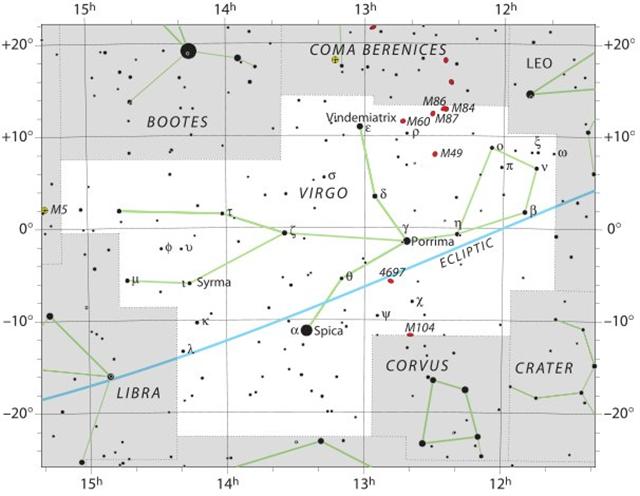
... The name [Benetnash]
derives from the Arabic
phrase meaning 'The
leader of the daughters
of the bier'. The
daughters of the bier,
i.e. the mourning
maidens, are the three
stars of the handle of
the Big Dipper,
Alkaid, Mizar,
and Alioth; while
the four stars of the
bowl, Megrez,
Phecda, Merak,
and Dubhe, are
the bier ... |
|
CLOSE TO THE FULL MOON
(and nakshatra dates): |
|
April 11 (82 + 19) |
12 |
ACHERNAR
(End of the River) |
4-14 (104) |
BATEN KAITOS
(Belly of the Fish) |
ANA-NIA-10
(Pillar-to-fish by)
POLARIS |
|
ºApril 7 (78 + 19) |
8 |
9 |
10 (100) |
11 (*21) |
12 |
|
'March 15 (*360) |
16 |
17 |
18
(77 = 104 - 27) |
19 (*364) |
20 |
|
"March 1 (41 + 19) |
2 |
3 |
4 (63) |
5 (*350) |
6 |
|
FEBR 6 (101 - 64 = 37)
|
7 |
8 |
9 (40) |
10 (*327) |
11 |
|
364 + 19 = 383 |
18 = 201 - 183 |
19 |
20 = 40 - 20 |
21 |
22 |
|
Polaris
was the 10th and last of
the Tahitian star
pillars (Ana).
Here new Land should be
'fished up' from the
deeps. The Sea was
beginning at Nunki
(*288) and could
possibly have stretched
for 15 weeks, because 15
* 7 = 105 and *288 +
*105 = *393 = *27
(Sheratan) + *366.
... This [σ
Sagittarii] has been
identified with Nunki
of the Euphratean
Tablet of the Thirty
Stars, the Star of
the Proclamation of the
Sea, this Sea
being the quarter
occupied by Aquarius,
Capricornus, Delphinus,
Pisces, and Pisces
Australis. It is the
same space in the sky
that Aratos designated
as Water
...
... The brothers of Maui
sat trembling in the
middle of the canoe,
fearing for their lives.
For now the water was
frothing and heaving,
and great hot bubbles
were coming up, and
steam, and Maui was
chanting the incantation
called Hiki,
which makes heavy
weights light.
At length there appeared
beside them the gable
and thatched roof of the
house of Tonganui, and
not only the house, but
a huge piece of the land
attached to it. The
brothers wailed, and
beat their heads, as
they saw that Maui had
fished up land, Te
Ika a Maui, the fish
of Maui. And there were
houses on it, and fires
burning, and people
going about their daily
tasks. Then Maui hitched
his line round one of
the paddles laid under a
pair of thwarts, and
picked up his maro,
and put it on again ...
The month
of Father Light (Jus
Piter), June, was on
Easter Island named
Maro (also meaning
dry, or loin-cloth) and
the winter solstice occured
in June 21 (*92), i.e.
10 days after Mintaka
had risen with the Sun.
South of the equator
winter solstice was at
the opposite side of the
calendar year. Thus
Orion (and all the other
stars) had moved ahead
with around 11 (= 366 -
355 = from December 21
to January 1) + 80 + *82
(Mintaka) = 173
precessional days since
the time when Orion had
been at the northern
winter solstice. 173 *
71 = 1842 AD + 10441 BC. |
The Julian spring equinox would
be reached after 4 more glyphs:
 |
 |
 |
 |
|
Cb1-1 (393) |
Cb1-2 |
Cb1-3 |
Cb1-4 (396) |
|
E tupu
-
ki roto |
o te
hau tea |
ki te
henua - te maro |
|
INVISIBLY CLOSE TO THE
SUN (helical dates): |
|
*210 |
*211 |
THUBAN
(Dragon) |
*213 |
|
Oct 17 (290 = 107 + 183) |
18 |
19 (*212 = *29 + 183) |
20 |
|
ºOct 13 (*23 + 183) |
14 (*211 - 4) |
15 (288) |
16 |
|
'Sept 20 (*183) |
21 (264 = 287 - 37 |
EQUINOX |
23 |
|
"Sept 6 (249 = 66 + 183) |
7 |
8 (*171 = *354 - 183 |
9 (252 = 293 - 41) |
|
AUG 14 |
15 (227 = 264 - 37) |
16 (*148) |
17 |
|
206 = 290 - 84 |
207 = 227 - 20 |
208 = 25 + 183 |
209 = 213 - 4 |
|
... The ubiquitous 288
was also (cfr JANUARY 3,
*288) the day number the
Pope Gregory XIII had
decided on for launching
his new calendar:
... The Julian calendar
day Thursday, 4 October
1582 was followed by the
first day of the
Gregorian calendar,
Friday, 15 October 1582
(the cycle of weekdays
was not affected) ...
But at the time of
rongorongo - after the
precession had corrected
his error in not going
all the way down to
Caesar, only down to 325
AD (the Council of
Nicaea) - day 288 (=
325 - 37) had become the
proper place for Antares
to rise with the Sun.
Tangaroa Uri 15
("October 15) was when
the Royal Double Canoe
was reaching Easter
Island
... |
|
CLOSE TO THE FULL MOON
(and nakshatra dates): |
|
Al Sharatain-1 /
Ashvini-1 /
Bond-16 (Dog) /
Mahrū-sha-rishu-ku-1
(Front of the Head of
Ku)
SHERATAN |
*28 |
ALRISHA
(The Knot) |
HAMAL |
|
April 17 (107) |
18 |
19 (*29) |
20 |
|
ºApril 13 (*23) |
4-14 (104) |
15 |
16 |
|
'March 21 (*366) |
22 (*1) |
23 |
JULIAN EQUINOX |
|
"March 7 (66) |
8 |
9 (*354 = *368 - *14) |
10 |
|
FEBR 12 (43) |
13 (*330) |
2-14 (45) |
15 |
|
364 + 25 = 389 |
390 = 207 + 183 |
25 = 45 - 20 |
26 = 30 - 4 |
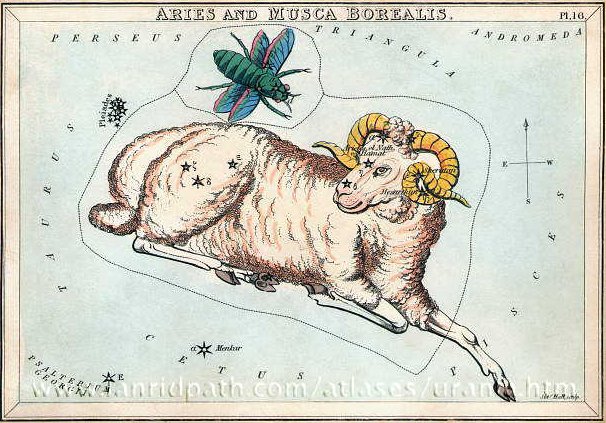 |
|





.jpg)





